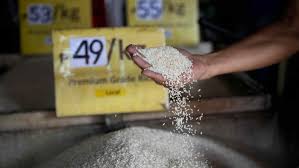Despite a reduction in the cost of producing rice from P15.24 per kilogram in 2019 to P13.64 in 2023–as estimated by the Philippine Rice Research Institute–rice millers are still pushing that this has to be cut to P8 per kilogram to make the staple more affordable for most people.
The millers belonging to the Philippine Confederation of Grains Association (Philcongrains) said that “reducing production cost is possible if fertilizer costs will go down and farmers will use high-yielding or hybrid seeds.”
“If the production cost of palay falls to P8 per kilogram, then the retail price of P30 per kilo is possible. It could even go down to below P30 per kilo if production cost reaches P8 per kilo,” Philcongrains President Herculano Co Jr. told media.
House Speaker Ferdinand Martin Romualdez said the House is keen on amending the rice tariffication law (RTL) as this could cut rice prices to as low as P30 per kilo.
“By amending the RTL, we aim to bring about tangible reductions in rice prices, ensuring that Filipino consumers are not unduly burdened by high food costs,” Romualdez said.
“Lowering rice prices to less than P30 is a crucial step towards ensuring food security and economic stability for all,” he added.
Domestic production, not importation
“Focusing on domestic rice production is essential, especially if the government wants to reduce the retail prices of the staple,” Co pointed out.
He added that the distribution of postharvest facilities such as dryers and enhancement of rice mills via the Philippine Center for Postharvest Development and Mechanization (PHilMech) will further boost output.
“PhilMech’s initiative to improve rice mills would help increase the milling recovery rate,” he said.
The latest price watch of the Department of Agriculture showed the average weekly price of local commercial rice in the capital region at P49.81 per kilo for regular and P51.63 per kilo for well-milled.
The imported commercial varieties are at P49.85 per kg (regular milled) and P52.66 per kg (well-milled).
Amending RTL
Amending the RTL could cost the government more debts and prevent it from reducing the budget deficit, said local economists.
Speaker. Romualdez said the House is committed to expedite plenary debates and attain the approval of the bill to amend the RTL on second reading by Wednesday, May 15.
Economists believe that geopolitics which encouraged trade protectionism through the imposition of embargoes necessitated a shift in the country’s rice policy.
“The risk [of amending the RTL] is to create enormous liability for the government, or enlarge the government budget deficit, when NFA [National Food Authority] tries to control the market price. This is based on pre-RTL historical precedent,” Senior Research Fellow Rhoelano Briones of the Philippine Institute for Development Studies (PIDS) said in a media interview.
‘No longer effective’
UP Professor Emeritus Epictetus Patalinghug noted that what the country needs right now is a shield against high rice prices in the international market, which NFA could provide.
Patalinghug said the RTL is no longer effective in bringing down rice prices. He insists that RTL “kills the domestic producers” and does not “restrain profit-driven firms from raising prices.”
The NFA’s absence from the local rice market stymied the government’s ability to address nutritional deficiencies such as hunger, malnutrition and starvation, he said.
“Different times call for different solutions. NFA has become useful today as a last-resort rice supplier to the poor, weak, vulnerable, hungry, and malnourished,” Patalinghug continued.
Briones said NFA can finance its rice purchases to intervene in the local rice market through supplemental budgets. If this budget is not enough, the government or even NFA, a state corporation, could itself borrow from various sources.
#WeTakeAStand #OpinYon #NFA #Philcongrains
